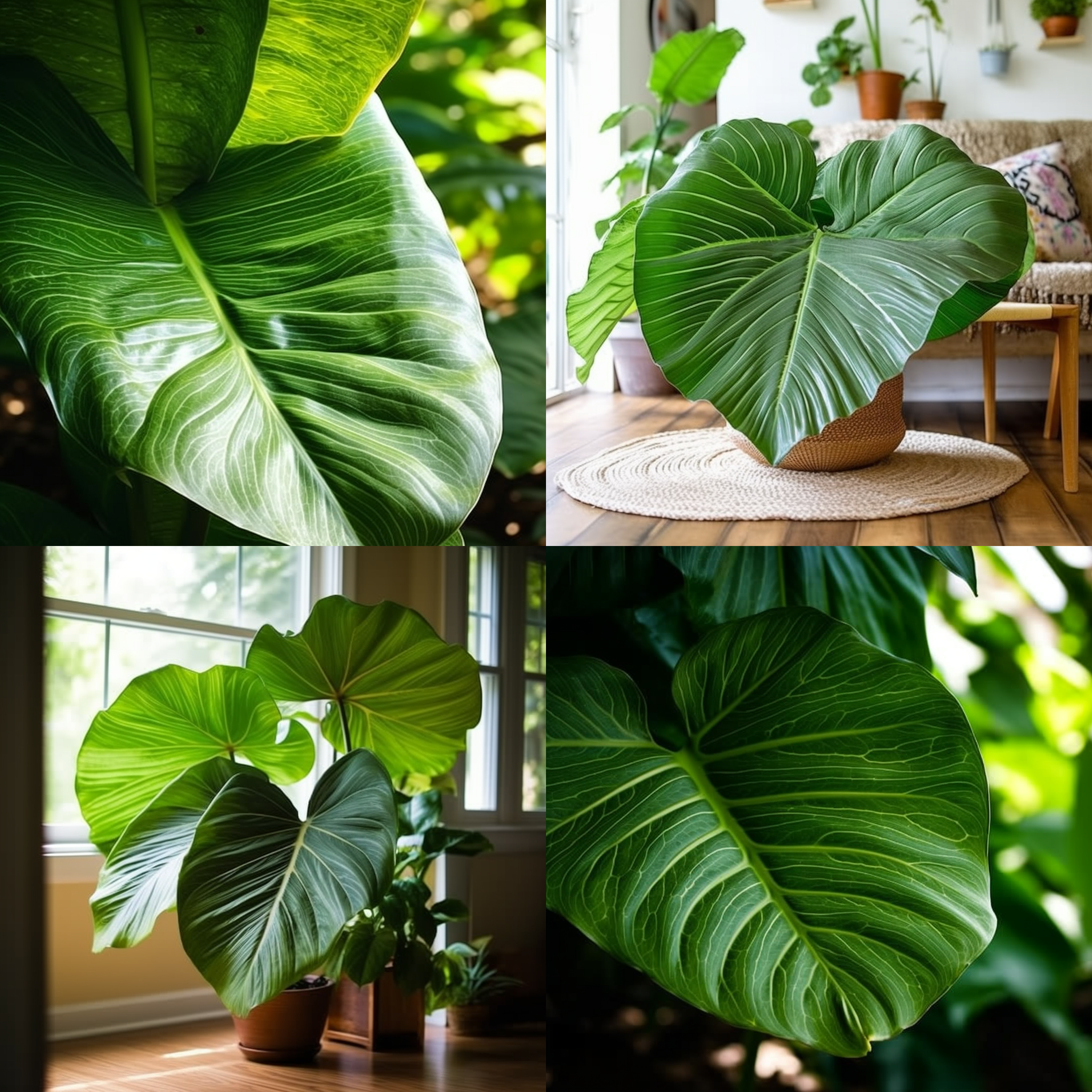Story of Day :
Contents
The Elephant Ear Plant: A Complete Guide and Care Tips for Gardeners
Garden enthusiasts surely know the elephant ear plant, also called colocasia or taro. It is a remarkable plant that can add an exotic touch to your garden with its large leaves that resemble elephant ears. But aside from being eye-catching, this plant is also easy to care for and has several uses beyond just being an ornamental addition. Read on to learn everything you need to know about the elephant ear plant.
What is an Elephant Ear Plant?

The elephant ear plant (Colocasia esculenta) is a tropical perennial herbaceous flowering plant native to southern Asia and Polynesia. It belongs to the Araceae family, which includes other popular houseplants like peace lilies and pothos.
What makes this plant stand out are its enormous leaves that grow up to 3 feet long and 2 feet wide. The leaves have arrow-shaped blades with prominent veins running through them, giving them a distinct texture.

Varieties of Elephant Ear Plants
- Black Magic: This variety boasts dark purple-black foliage that contrasts well with brightly colored flowers in your garden.
- Diamond Head: With deep green foliage tinged in black at the base of each leaf stalk, this variety can provide stunning contrast when paired with lighter-colored plants or flowers.
- Giant Upright: As its name suggests, this variety features upright stems growing up 5-6′ tall topped by huge green leaves measuring up to 3′ across!
Care Tips for Your Elephant Ear Plant

If you’re considering adding an elephant ear plant into your garden or indoor space, know that it’s a low maintenance plant that requires little attention. Here are some tips:
Light

Elephant ear plants thrive in partial to full shade. Direct sunlight may burn their leaves, so it’s best to keep them in an area with filtered light or morning sun and afternoon shade.
Water
The elephant ear plant needs consistent moisture but not waterlogged soil. Water it regularly but let the soil dry out slightly between each watering. Try not to let the soil stay too wet for extended periods as this can lead to root rot.
Fertilizer
Feed elephant ear plants every six weeks with a slow-release fertilizer during the growing season (spring through summer). The fertilizer should be rich in nitrogen, which promotes leaf growth and development.
Pests and Diseases of Elephant Ear Plants
Like any other plant, your elephant ear plant may fall prey to pests or diseases that can damage its foliage or stunt its growth. Here are some common issues you might encounter:
- Aphids: These tiny bugs suck sap from your plant’s leaves and cause yellowing or distortion of the foliage.
- Caterpillars: These insects eat holes through your elephant ear leaves, leaving unsightly chew marks behind.
- Fungal Leaf Spot: This disease causes brown spots on your leaves due to excess moisture on foliage from overwatering or high humidity levels).
The Versatility of Elephant Ear Plants
Gardeners love elephant ears because they’re versatile plants that can serve different purposes beyond being an ornamental addition. For example,
- You can use elephant ear plants as a natural air purifier in your home, office, or garden.
- The tubers of the elephant ear plant are edible and used in many dishes worldwide. They’re high in fiber and packed with vitamins and minerals such as magnesium, potassium, and iron.
- You can use the leaves of an elephant ear plant to wrap food for cooking or as a disposable plate for serving food.
Conclusion
With its exotic foliage and multiple uses, the elephant ear plant is undoubtedly a unique addition to any garden or indoor space. Follow these care tips to keep your plant healthy year-round so you can enjoy its beauty throughout all seasons.
